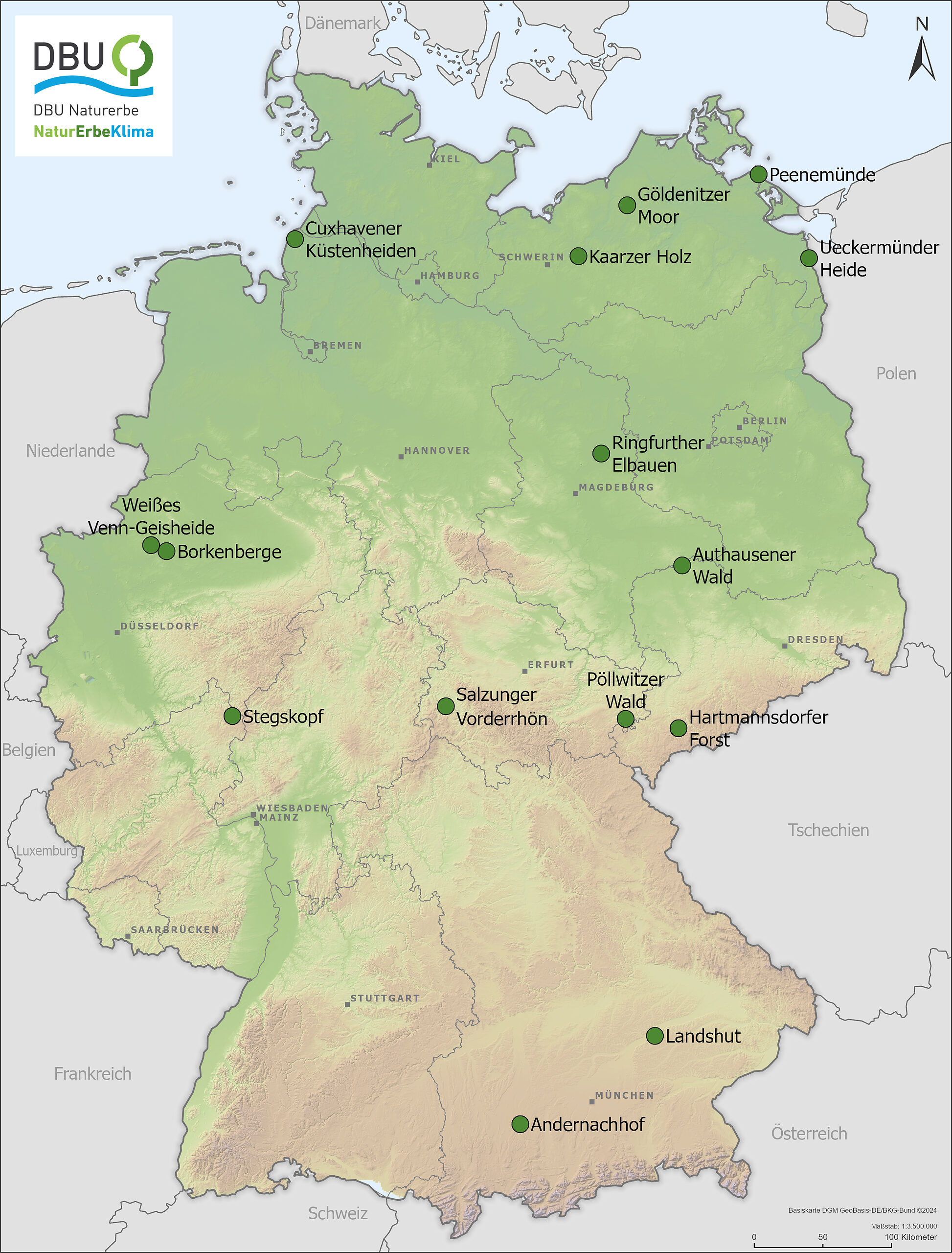Supported as part of the Natural Climate Protection Action Program by the Federal Agency for Nature Conservation with funds from the Federal Ministry for the Environment, Nature Conservation, Nuclear Safety and Consumer Protection
Natural heritage areas for climate protection
As a model project in the Natural Climate Protection Action Program, the feasibility study is intended to show ways of implementing natural climate protection measures on nature conservation areas, such as the areas of the National Natural Heritage, and to promote the integration of climate protection goals into nature conservation concepts. The focus here is particularly on the implementation of specific rewetting and renaturation measures for moors, wetland habitats and floodplains, increasing the resilience of coniferous forests and evaluating the concepts with regard to nature conservation and climate protection. The guidelines developed in the project are intended to make it easier for interested owners of nature conservation areas to develop, implement and evaluate projects with the objective of natural climate protection. At the same time, solutions to legal implementation hurdles and conflicting objectives are presented.
Implementation examples and digital guide
The National Natural Heritage sites offer a unique opportunity to implement natural climate protection measures in a timely manner on large, diverse and permanently secured nature conservation areas in various federal states. In the course of the feasibility study, implementation-oriented concepts for measures to integrate the goals of natural climate protection on DBU natural heritage sites are to be developed and evaluated with regard to their climate and nature conservation impact using a suitable procedure. Project examples are used to illustrate the detailed planning of measures with the involvement of the authorities up to the approval stage. In addition, an integrated, practice-oriented monitoring concept for the water balance and climate resilience of nature conservation areas is being developed. The technical and conceptual project results, which are transferable beyond the project areas to other nature conservation areas and which are developed in workshops with participants from implementation practice, will be compiled into a digitally accessible guide. The development of measure concepts ready for approval also contributes to the identification and thus the potential reduction of implementation hurdles for natural climate protection projects and serves as concrete preparation for the implementation of the planned measures in a further project phase.

